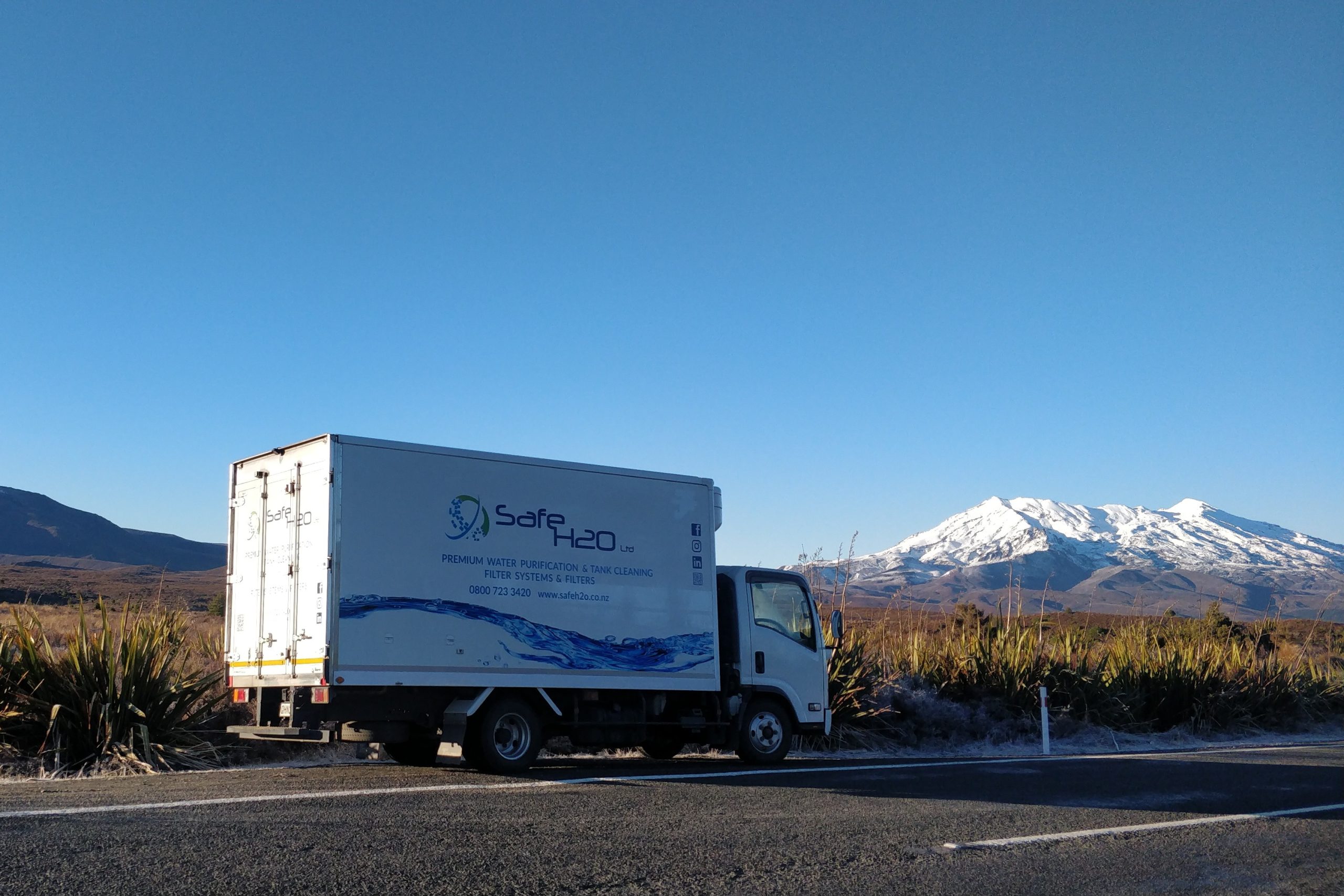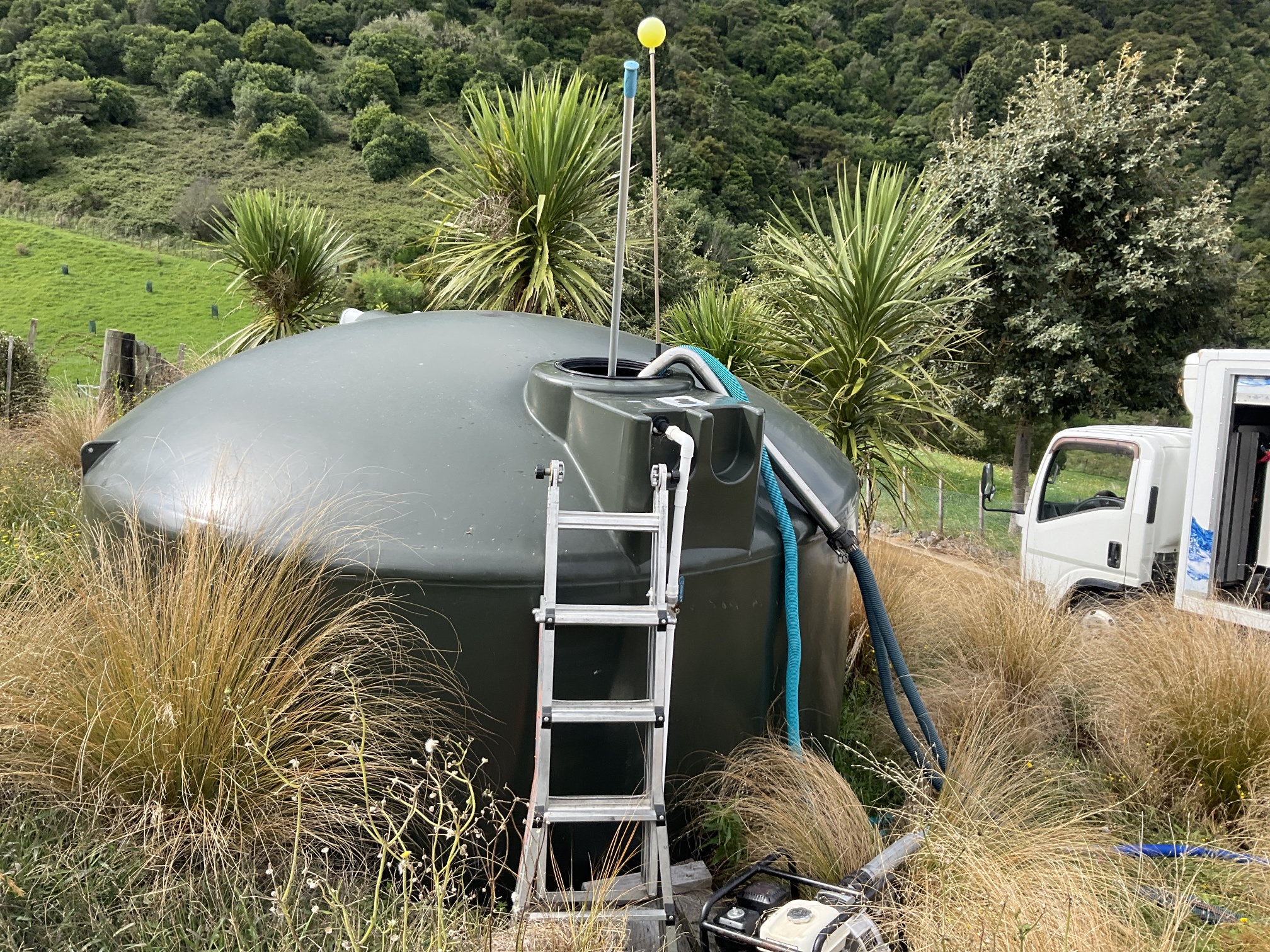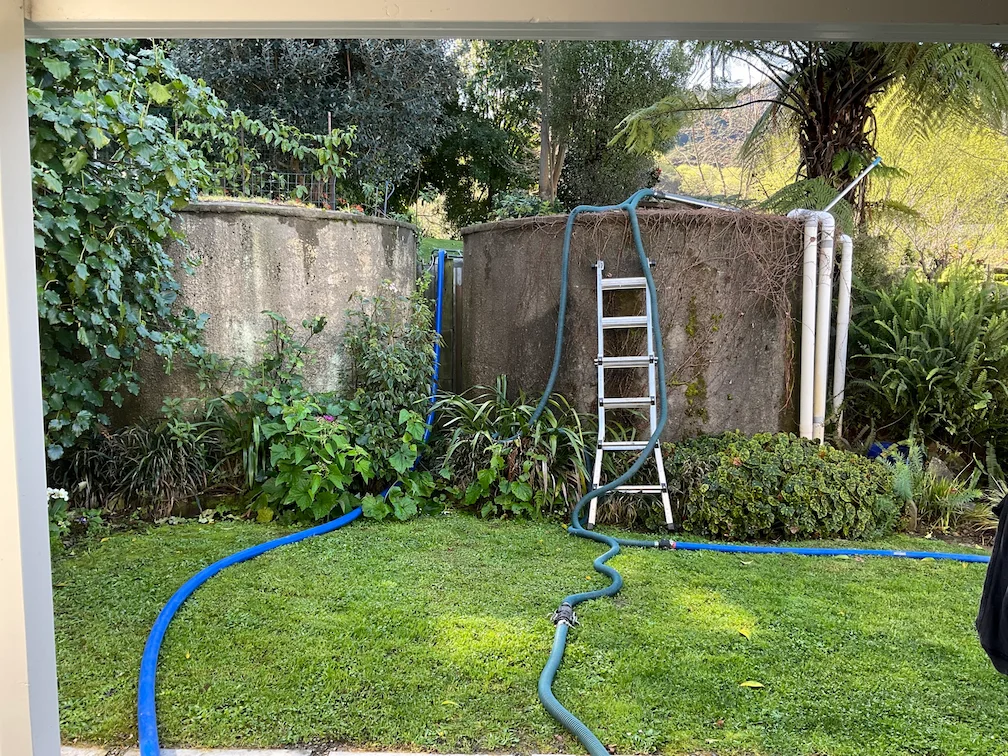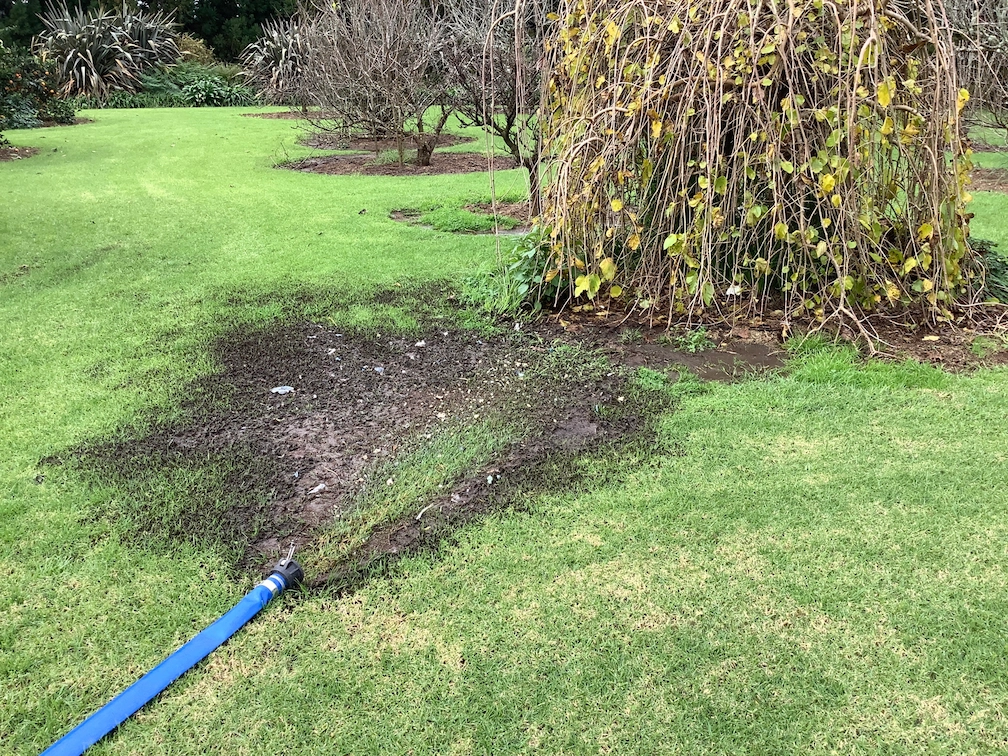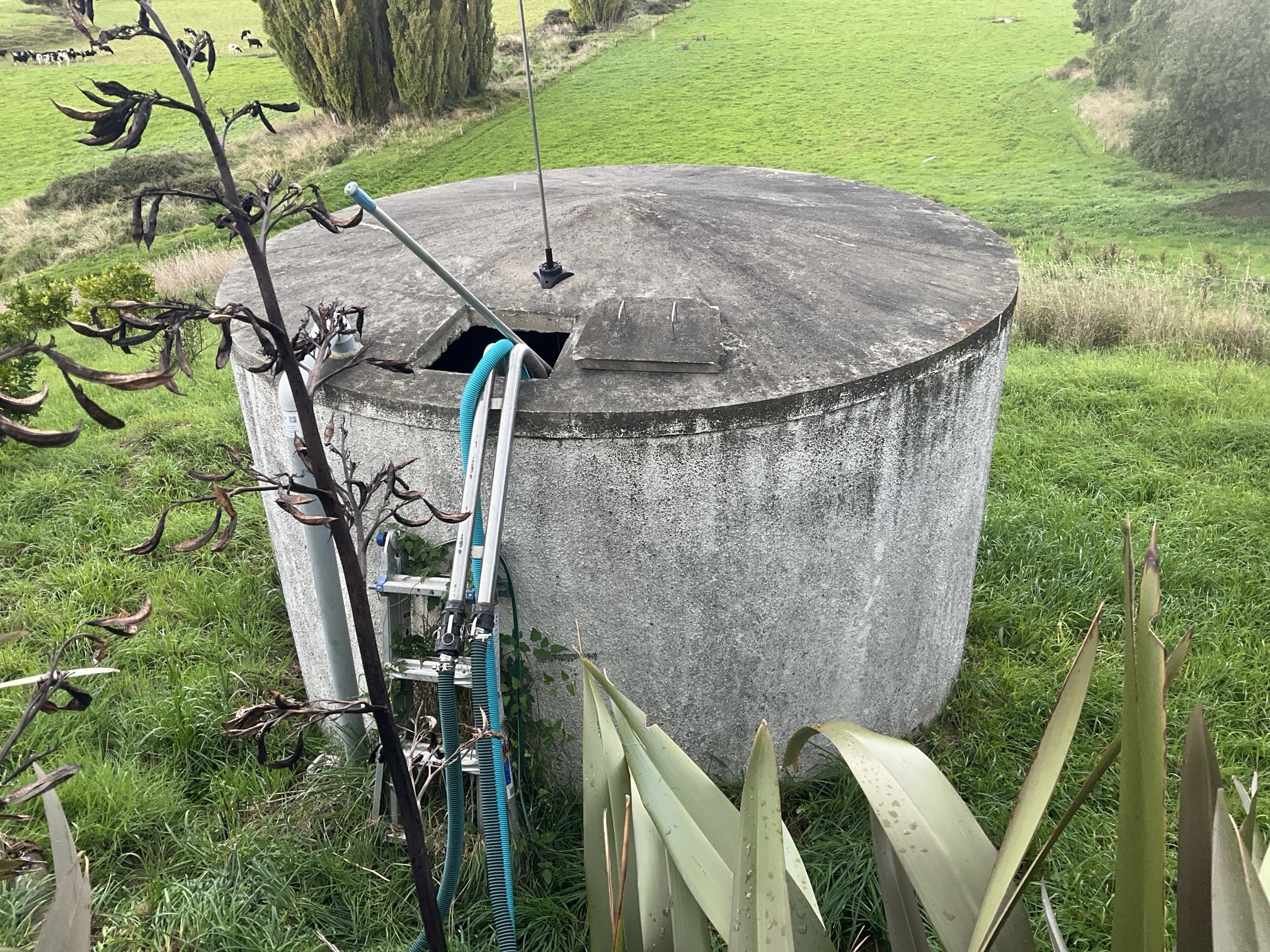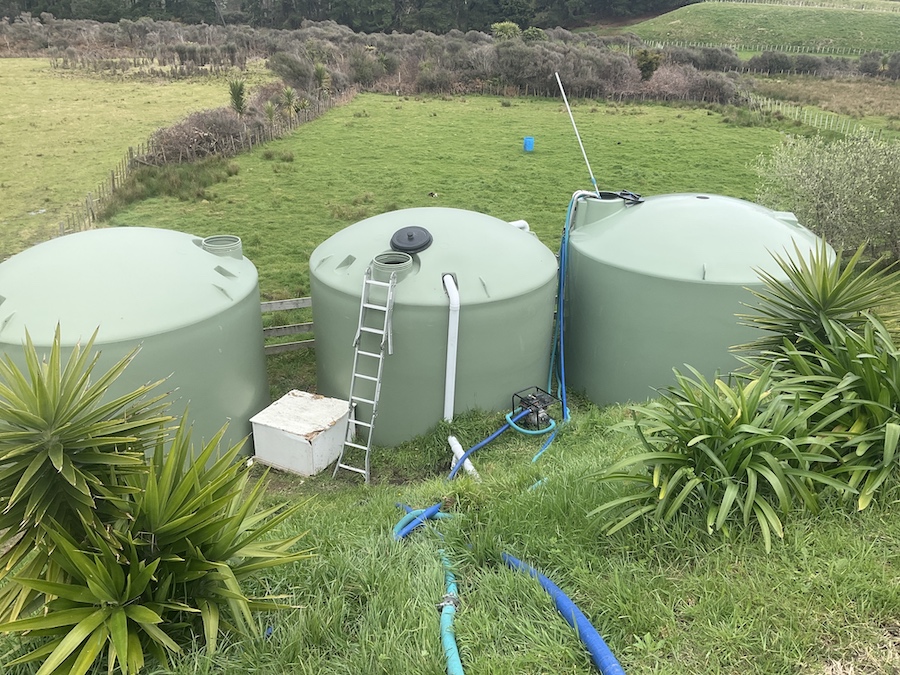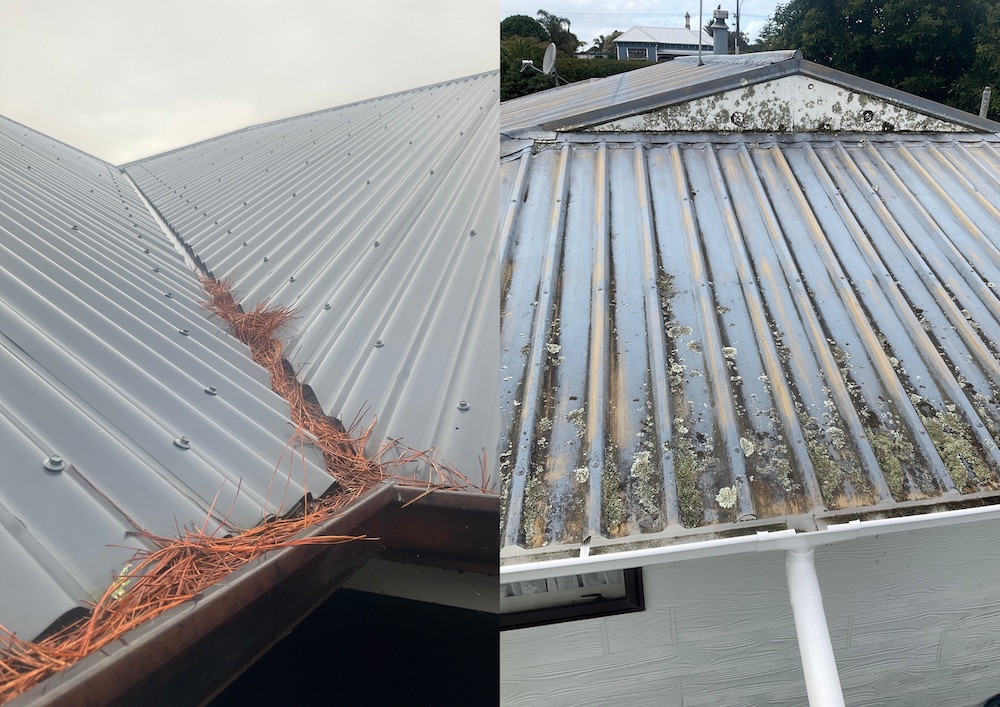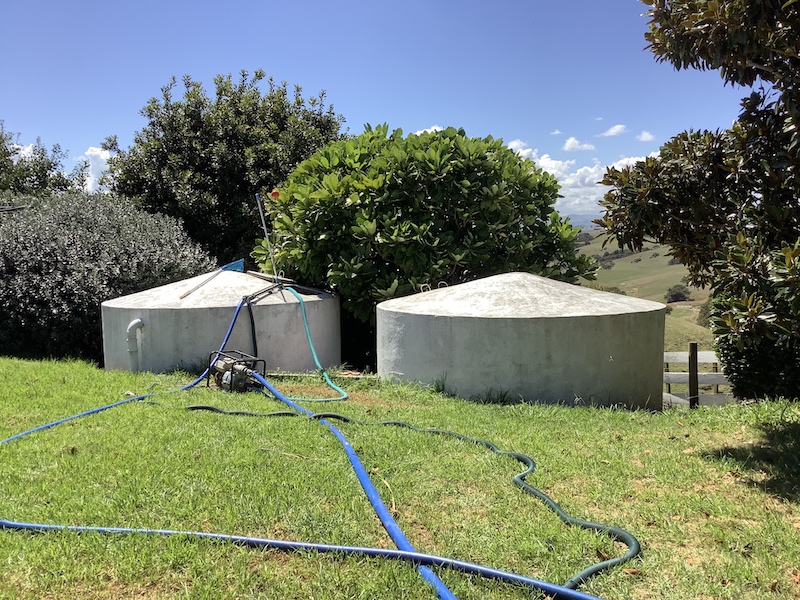How Often Should I Clean My Water Tank in New Zealand?
If you are one of the thousands of New Zealanders with water tanks on your property, you will want to know how often you should clean your water tank.
Here in NZ the Ministry of Health recommends you should clean your water tank annually.
If your water source is rainwater off the roof, then you will get bacteria in your tank water at different times. This is inevitable due to bird droppings, amongst other things, being picked up by the rainwater and carrying bacteria such as E-coli into your tank. The same risks apply if your water source is a stream/surface water or spring and often this applies for a shallow bore (less than 30m deep).
Bore water supplies, deep or shallow, often draw up minerals and/or grit/debris. As with the organic matter that gets into rainfed tanks, this needs regular cleaning. The key is to minimise the amount of sediment in the bottom of the tank as this can provide a breeding ground for bacteria to grow and thrive in.
The other problem with sediment in your tank is that it can minimise the effectiveness of UV treatment by the sediment going into solution and blocking the UV light from reaching the bacteria. This in turn increases the health risk.
For rainfed tanks factors to consider when you determine how often you get your tank cleaned are:
- What is likely to get in your tank? How many trees do you have surrounding your property, how many leaves are getting on the roof, are there busy roads and/or unsealed roads nearby causing dust, what is the likelihood of spray drift (pesticides and fertilisers) from surrounding agricultural and horticultural activity, and how much pollen do you get at the property?
- Who is using the water? Younger and older people are more at risk should anything go wrong with your water, as is anyone with an underlying health condition. Visitors would also be more at risk due to potential lack of exposure to contaminated water.
In the end it comes down to personal choice about how particular you want to be about the quality of your water for you and your family.
A regular cleaning regime to keep on top of the risk is advisable and from experience of cleaning thousands of tanks annually, Safe H2O recommend you should clean your tank at least every two years.
What can I do to ensure clean and safe water and minimise my risks?
Before the tank
Rainwater fed tanks
Keeping your roof and gutters clean helps minimise the amount of sediment getting into your tank(s).
The same applies for leaf guards or gutter whiskers. Having a flushing cap fitted and regularly opening this during rain events is also a simple and cost-effective way of reducing the amount of organic material entering the tank.
There are also first flush diverters of varying designs that perform a similar function.
Spring/Surface water fed tanks
Spring or surface water (streams) will usually be contaminated with a range of bacteria and soil, as well as inorganic and organic contaminants. The type and number will vary depending on the land management activities occurring in the catchment. To reduce the levels of these contaminants we recommend you:
- Exclude high-risk activities from the catchment if possible, e.g. intensive stock grazing, chemical spraying, cultivation and cropping, application of poison for pest management etc.
- Use an infiltration system in the bed or bank of the stream where possible to filter out large contaminants
- Provide a settling basin or tank downstream of the surface water intake to settle out sediment and other large contaminants
- Avoid taking water during periods when the source is very dirty e.g. after a rain event, by providing extended untreated water storage.
Bore fed tanks
Bore water can be contaminated by contact with contaminated soil, surface water and/or shallow groundwater. To mitigate these risks, make sure your bore meets the following requirements:
- At least 50 metres away from any wastewater treatment, collection or discharge system e.g. septic tanks and discharge fields
- Sealed for the first few meters below ground with a sealing clay or other impervious material
- Sealed at the surface with a concrete apron which sheds rainwater
- All penetrations of the bore by pipes or cables are closed and secure
- All stock is excluded from approaching closer than 10 metres to the bore.
As these sources (bore and surface/spring water) contact the earth they can and do pick up elements such as iron, manganese as well as bacteria from the ground. A water chemistry test of the source water is required to determine what exactly the make-up of each groundwater supply is. This will determine if any pre-treatment is required for the water source prior to storage by comparing the water to the NZ Drinking Water Standards and being able to ascertain if the water is within the required specifications for UV filtration to function.
A common example relating to NZ ground water is the presence of iron and manganese. If these elements are present above a certain concentration, they will render UV filtration ineffective. These levels are lower than the acceptable levels for the NZ Drinking Water Standards. As such the water would need treatment to remove these chemicals prior to storage.
At the tank
Nothing will fully stop all sediment getting into your tank so regular tank cleaning is a must. You could also consider a floating out-take pipe so that you are drawing the water from your tank well above any sediment that may collect at the bottom of the tank. This is less of a factor if you undertake regular tank cleans!
If you have more than one tank and they are equalised (joined) then the primary (first recipient of water off the roof) tank will gather a greater amount of sediment in it than the subsequent tanks.
In this circumstance drawing your water into the house from the secondary tank(s) or if more than two tanks, the tank farthest away from the primary tanks, is sensible.
After the tank
What if I don’t clean it often enough?
Without regular cleaning of your tank the sediment in your tank will build up and increase the health risk to you and your family. It does this by providing a medium in which bacteria that enter the tank can thrive.
Further, it is more likely to minimise the effectiveness of any filtration you have in place. As sediment goes into solution in your water, it can overwork your filters (meaning you are having to change filters before their expected lifespan) and can render UV systems less effective by blocking the UV light from reaching their target of bacteria in the water.
To reiterate, regular tank cleans go hand in glove with filtration. Either tank cleaning or filtration by themselves are an improvement on doing nothing, but do not provide the level of protection that both working together do.
Does my location make a difference?
In short, yes, location does make a difference in terms of how quickly sediment builds up in your water tank.
Factors to consider are how many trees overhang or surround the roof of your property, how close you are to roads and how busy they are (especially if the road is not sealed), how much pollen is blown across your property, what is the risk of spray drift from surrounding agricultural and horticultural activities, or how close are you to a beach for windblown sand.
If your water source is groundwater, ascertaining the level of sediment in the water source and risks surrounding the source are key to understanding your likely sediment build-up.
Signs that indicate the water tank needs cleaning
Signs that indicate a water tank needs cleaning include but are not limited to:
- Smell to your water
- Taste(s) in your water
- Colour in your water
- Looking in your tank and seeing sediment on the bottom
- Filters blocking before their expected lifespan and/or being highly discoloured in a short period of time
- Loss of water pressure in the house
- Ongoing tummy upsets and other ill-health in the household, especially if it clears when you are away from home
Read here about the typical signs that your water tank needs a clean.
These indicators tend to occur when the tank is overdue for cleaning. The best approach is to arrange a regular clean every 1 to 2 years as part of an ongoing maintenance regime.
Doing this means you are far less likely to experience the above symptoms, provides greater comfort that your water UV filtration can be effective and ensures you are minimising your risk on an ongoing basis.
Do I need to replace the water?
With the traditional tank cleaning method of emptying the tank, mucking it out and then refilling it, the answer is yes. However, the Safe H2O process treats both your water and cleans your tank, meaning you have no need for replacement water. For this very reason our Safe H2O water tank cleaning service is very popular, given regular seasonal challenges with accessing water deliveries.
Safe H2O clean water tanks by vacuuming out the sediment and then once this is removed, filter the remaining water through our purpose-built trucks.
This goes through 25 micron, 1 micron, and finally nanofiltration at 0.001 micron, filters that effectively remove any dangerous contaminants from the water.
The purified water is returned to the tank on a continuous cycle meaning you do not need to purchase replacement water or draw additional water from a bore.
We also add a small dose of food grade hydrogen peroxide as a belts and braces measure to ensure the water is safe and especially to flush the lines feeding off the water tank to ensure they are clean and safe.
What are my legal obligations for water tank cleaning?
Taumata Arowai is the new Water Services Regulator for Aotearoa New Zealand from November 2021.
They are committed to ensuring all communities have access to safe and reliable drinking water every day. Guidance and Resources – Taumata Arowai
In Section 6 of the Water Services Act, it says “drinking water means water that is used for human consumption, or oral hygiene or preparing food and drink, washing utensils that are used for eating and drinking, or for preparing, serving, or storing food or drink for human consumption.”
The new Water Services Act 2021 clarifies the definitions of ‘safe’ and ‘potable’ water means:
- It is safe to drink
- It complies with the Drinking Water Standards for New Zealand 2022.
Taumata Arowai has introduced various regulations for private water suppliers. In summary, as soon as a water source supplies more than one building to provide potable water, it is a water supply and is subject to some form of regulation.
The rule of thumb is that the greater the number of people using the water, (and therefore the number of people at risk should anything go wrong with the supply) the greater the water treatment requirements.
The actual legal obligation to clean your water tank depends on the type of property involved and water use – read on to find out the regulations for your situation.
Should I use water filters?
Yes! Regardless of your water source and preventative measures, sediment build up is constant and ongoing. Regular tank cleaning keeps the level of sediment in control, but in between, it builds up again, and bacteria enter the tank continuously.
For rainwater supplies you cannot control what gets on your roof. This includes birds and bird droppings, which carry bacteria, including E-Coli.
While regular tank cleans minimise the risk of these bacteria multiplying nothing can remove the risk of them being present on an ongoing basis – other than filtration.
Having some filtration at the pump means that you and your family are not being the filter in between tank cleans. In conjunction with regular tank cleans this provides you and your family with the best protection going forward.
What filtration is right for me?
Typically, you would install dual sediment filters – one higher micron filter e.g. 20 micron, being first in line to remove the larger sediment, followed by a 1 micron filter to remove finer sediment.
House filters tend not to go below 1 micron as going any finer negatively impacts the water pressure in the house. In some cases, a third filter is added – this is typically a carbon filter which helps remove odour and colour from water, if that is required.
Bacteria tend to be 0.5 of a micron in size and therefore pass through the 1 micron filter. This is why households and businesses install a UV bulb in conjunction with the sediment filters. The UV light neutralises the bacteria and makes your water safe.
It is important to reiterate that the filters and regular tank cleans go hand in hand. One is not a substitute for the other. Without the regular tank clean your filters will be overworked and less effective e.g. the sediment in solution in the water will render the UV less effective as it blocks the UV light from reaching its target bacteria.
Please also note that what you legally need to do in terms of filtration can depend on your water source, who is using the water and what you are using it for. Click here to find out more about your specific legal obligations for water tank cleaning
How much does it cost to clean my water tank?
The cost of cleaning your tank depends on several factors. Read our blog post which details the factors involved in determining the cost to clean your water tank in NZ.
Or just call us on 0800 723 342 for a free estimate.
Water Saving Tips
Rainfed tank water is a limited supply and consequently is a precious resource to be conserved as much as possible. This is especially the case in the drier months of summer.
There are several key areas where the average household uses the most water: the kitchen, bathroom and laundry. In addition to considering savings, attending to leaks and maximising your water catchment are great starting points.
There are actions you can take to ensure you have ongoing access to clean and safe water on your property. In addition to these detailed points, simply being aware of the need to conserve water will result in you using less water.
On your property
Maximise your rain catchment by cleaning all your guttering regularly and checking for leaks and blockages.
Check your home for leaks – dripping taps, showerheads and leaky toilets all contribute to water being wasted in the home. If your water pump is operating at times, you are not using water e.g. during the night, then this is likely to mean you have a leak(s) that is/are activating the pump.
You can also consider installing water flow restrictor fittings on your shower and/or taps that minimise the amount of water wasted.
Water Leak Checklist:
- Check all taps, inside and outside the home.
- Look behind the dishwasher for any signs of water.
- In dry weather, look for damp patches in the garden, lawn, or driveway.
- Listen for the water pump working when you are not using water or running water inside your home when no taps, hoses, or showers are turned on.
If you discover the source of a leak, get in touch with a registered plumber if you cannot fix yourself.
In the bathroom
- Turn off the water when brushing your teeth or shaving. You will use around one litre of water instead of five litres.
- Limit your showers to four minutes or less.
- Catch the water used when waiting for the shower to warm up in a bucket and use in your garden.
In the laundry
- Wash full loads whenever possible. This will save water and energy.
- Reduce the need to wash towels by hanging them in direct sunlight after use.
- Change to water-efficient settings on your washing machine – an easy water-saving tip for the laundry is to use the economy settings on your washing machine. Reducing the wash to one rinse cycle rather than two will also save up to 100 litres of water per wash.
In the kitchen
- When hand-washing dishes, fill the sink rather than rinsing and washing the dishes under a running tap.
- Don’t leave your tap water running – the average tap uses 12 litres of water a minute. Fill your sink or a bowl with the water you need and use this water e.g. to scrub vegetables. This can be used to water plants afterwards.
- Keep a jug of drinking water in the fridge – running your kitchen tap while waiting for the water to be cold wastes many litres of water. Instead, keep water in a covered jug in the fridge.
Around the property
- Use a bucket of soapy water to clean windows or the car. Only use the hose for a quick spray to finish.
- Sweep your paths and driveway rather than hosing.
Need a tank cleaning cost estimate?
If you do want a tank cleaning price estimate from Safe H2O, the easiest way is to tell us about your tank using our short form.
Or give us a call on 0800 723 342 – it usually takes a few minutes, and we can answer any questions you might have.
In this blog, we'll explore these frequent water tank problems and provide practical solutions to address them effectively
Smoke and soot can contaminate NZ water tanks. Learn how it happens, the health risks, and Safe H2O’s expert tips for cleaning and prevention.
This comprehensive guide examines the benefits and drawbacks of DIY and professional water tank cleaning, enabling you to make the best choice for your home.
Winter’s cooler weather might not have you thinking about your water tank - but it should.
Whether you’re collecting rainwater, drawing from a bore, or tapping into a stream, your water tank is the heart of your...
Whether you’re collecting rainwater, drawing from a bore, or tapping into a stream, your water tank is the heart of your...
How Possums, Rodents, and Birds Get into Your Water Tank – and How to Keep Them Out When thinking about water quality, …
What’s in Your Water? Common Contaminants in NZ Drinking Water Tanks Whether your water comes from rainfall, a bore or a nearby …
Water Tank Cleaning Myths Debunked When it comes to maintaining clean and safe water in your tank, there can be a bit …
Autumn Water Tank Care Tips: Preparing for the Seasonal Change As the crisp air of autumn rolls in, it’s time to think …
Water Tank Cleaning: A Comparison of Traditional vs. Our Innovative Method When it comes to cleaning your water tank, Safe H2O cleans …
UNDERSTANDING FILTRATION SYSTEMS: WHAT IS SEDIMENT AND UV WATER FILTRATION? Your water source likely contains a myriad of sediments and particles, ranging …
Water Tanks 101: A Beginner’s Guide to Clean, Safe Water for Your Property Water tanks are an essential resource for those on …
What can I do before water enters my tank to help minimise my risks? Spring or surface water (streams) will usually be …
When it comes to maintaining a healthy rainwater fed tank, one of the most overlooked aspects is the cleanliness of your roof and gutters.
Flush Caps, Leaf Diverters, and More: Methods to Help Protect Your Water Supply When it comes to maintaining a clean and safe …
In the realm of curious misconceptions, one fascinating myth suggests that eels clean water tanks. While this idea captures the...
Why having ‘Immunity’ to Bad Tank Water is a Bad Thing When it comes to maintaining a healthy home, clean water is …
Safe H2O Collaborates with Isaac’s Plumbing, Pumping and Electrical Here at Safe H2O, we aim to provide exceptional advice, service, and support …
How Often Do New Zealand Schools Need to Clean Their Water Tanks? Here in NZ, managing water supplies, including water tank maintenance …
What is Cryptosporidium and How to Keep Your Water Safe What is Cryptosporidium? In simple terms, Cryptosporidium is a tiny parasite that …
Why you should use a Water Tank Cleaning Specialist Well maintained water tanks are the backbone of clean water storage and supply …
Guarding Against E. coli: Essential Strategies for Ensuring Safe Water Tank Systems Water tanks are an essential source of clean drinking water …
5 Top Reasons to Keep Your Water Tank Clean in New Zealand Cleaning your water tanks is something that’s probably not always …
Autumn Alert: Why Now is the Perfect Time to Clean Your Water Tank As the autumn leaves are about to fall and …
What are my Legal Obligations for water tank cleaning in New Zealand? Taumata Arowai is the new Water Services Regulator for Aotearoa …
Top signs your water tank needs cleaning – Don’t ignore these red flags Your water tank is a vital component of your …
How Often Should I Clean My Water Tank in New Zealand? If you are one of the thousands of New Zealanders with …
The Risks of Cleaning Your Water Tank with Janola or Household Bleach Should you use Janola to clean your water tank? Here …
12 Ways to Save Your Tank Water Worried about your water tanks running empty? Rainfed tank water is a limited supply and …
There is no excerpt because this is a protected post.
How much does it cost to clean my water tank? The cost of cleaning a typical New Zealand water tank depends on …




